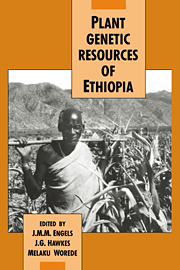Preface
Published online by Cambridge University Press: 30 October 2009
Summary
Plant genetic resources constitute the building blocks of all modern plant breeding. They form the raw material from which new varieties have been systematically bred to meet the growing need for more food. These traditional genepools are an invaluable asset to the welfare of mankind and should be preserved, both for current use and for posterity. Loss of genetic diversity is detrimental to crop improvement programmes. To prevent this loss countries in all parts of the world are endeavouring to conserve and utilize these precious materials. The plant genetic resources (PGR), thus, must be systematically collected, characterized, evaluated, documented and conserved, for effective utilization. This is all the more important, now, since agriculture is becoming more and more industrialized, thus leading to a narrowing of the genetic base, demanding genetic uniformity and causing vulnerability to pest and disease attacks, all of which pose high risks to sustainable agricultural production systems. The variability in landraces, and the primitive cultivars held by traditional farming societies, can provide the world with appropriate raw material to stop such unwanted processes. It is therefore essential to conserve it at all costs.
The urgency and the need to collect and conserve plant genetic wealth was advocated some three decades back by the Food and Agricultural Organization of the United Nations (FAO), and since the 1960s the network of activities in this context has spread considerably.
- Type
- Chapter
- Information
- Plant Genetic Resources of Ethiopia , pp. xiii - xviPublisher: Cambridge University PressPrint publication year: 1991

